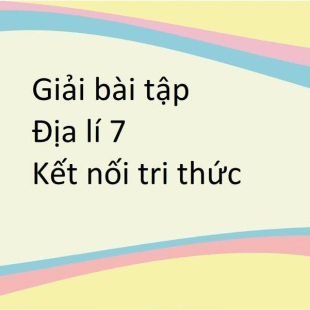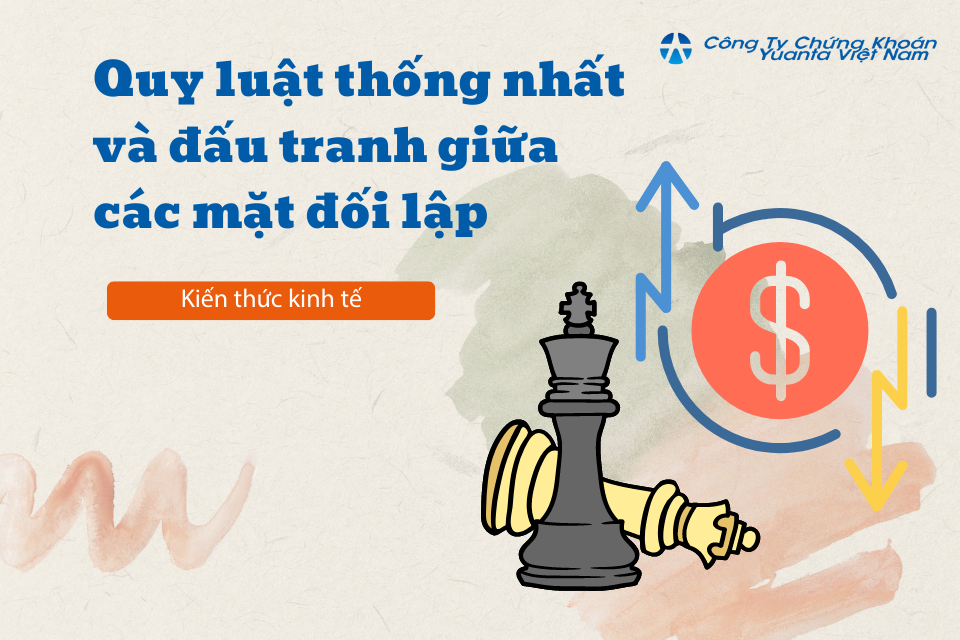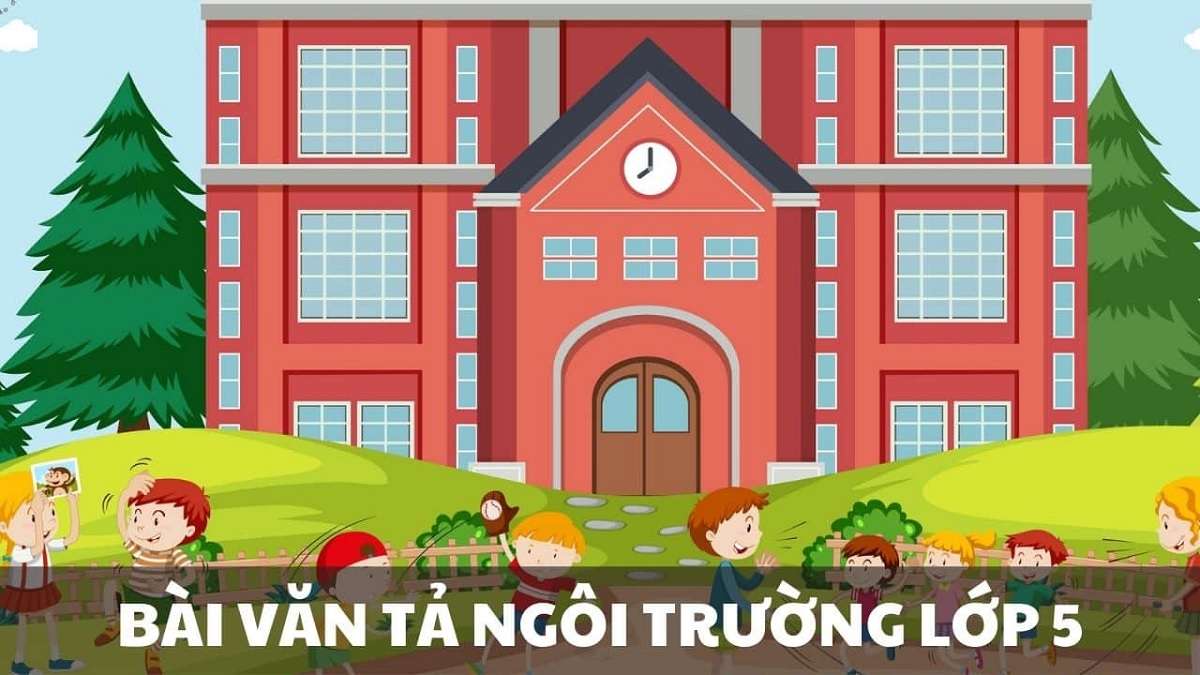Bài viết lách 50 Bài tập dượt Rút gọn gàng mệnh đề mối liên hệ cực kỳ hoặc đem điều giải bao gồm không thiếu thốn lý thuyết trọng tâm về Rút gọn gàng mệnh đề mối liên hệ và bên trên 50 bài xích tập dượt về Rút gọn gàng mệnh đề mối liên hệ tinh lọc, đem đáp án cụ thể giúp cho bạn nắm rõ cơ hội dùng của Rút gọn gàng mệnh đề mối liên hệ.
50 Bài tập dượt Rút gọn gàng mệnh đề mối liên hệ cực kỳ hoặc đem điều giải
Phần I. Lý thuyết
1. Rút gọn gàng mệnh đề mối liên hệ bằng phương pháp người sử dụng thời điểm hiện tại phân kể từ V_ing (Present participle phrases)
Bạn đang xem: 50 Bài tập Rút gọn mệnh đề quan hệ cực hay có lời giải.
Nếu động kể từ vô mệnh đề mối liên hệ ở thể dữ thế chủ động (active), tớ người sử dụng cụm thời điểm hiện tại phân kể từ (V_ing) thay cho mang lại mệnh đề cơ.
*Bỏ đại kể từ mối liên hệ và động kể từ “to be”:
Ví dụ: The girl who is wearing glasses is my cousin.
→ The girl wearing glasses is my cousin. (Cô gái đem kính đó là em chúng ta của tôi.)
*Bỏ đại kể từ mối liên hệ, đem động kể từ chủ yếu về nguyên vẹn khuôn mẫu và tăng đuôi “-ing”:
Ví dụ: The girl who wore glasses is my cousin.
→ The girl wearing glasses is my cousin. (Cô gái đem kính đó là em chúng ta của tôi.)
2. Rút gọn gàng mệnh đề mối liên hệ bằng phương pháp người sử dụng quá khứ phân kể từ V3/ed (Past participle phrases)
- Nếu động kể từ vô mệnh đề mối liên hệ ở thể thụ động (passive) tớ người sử dụng cụm quá khứ phân kể từ (past participle phrase)
- Ta quăng quật đại kể từ mối liên hệ (relative pronouns), động kể từ to tát be, vẫn lưu giữ quá khứ phân kể từ V3/ed.
Ví dụ: The book which was published by AC magazine is the best-seller of this month.
→ The book published by AC magazine is the best-seller of this month.
(Quyển sách được xuất bạn dạng vị tập san AC đó là thành phầm hút khách nhất mon này.)
3. Rút gọn gàng mệnh đề mối liên hệ vị “to infinitive”
*Khi danh kể từ đứng trước đem những chữ tại đây vấp ngã nghĩa: the only, the first, the second,…, the last, đối chiếu nhất
Ví dụ: He was the last man who left the room
→ He was the last man to tát leave the room. (Anh tớ là kẻ sau cuối tách chống.)
*Động kể từ là have/ had
Ví dụ: I had some exercises that I need to tát vì thế.
→ I had some exercises to tát vì thế. (Tôi đem một vài bài xích tập dượt rất cần được thực hiện.)
* Đầu câu đem Here (be), There (be):
Ví dụ: Here is the sườn that you must fill in.
→ Here is the sườn for you to tát fill in. (Đây là khuôn mẫu nhằm chúng ta điền vấn đề vô.)
4. Rút gọn gàng mệnh đề mối liên hệ bằng phương pháp dùng cụm danh từ
Đối với mệnh đề mối liên hệ ko xác lập rất có thể được rút gọn gàng bằng phương pháp người sử dụng cụm danh kể từ đem dạng: Relative Pronoun + be + danh từ/ cụm danh từ/ cụm giới từ
Cách làm: quăng quật đại kể từ mối liên hệ như who ,which và quăng quật luôn luôn cả be.
Ví dụ: Taylor, who is a popular singer, has just split up with her boyfriend.
→ Taylor, a popular singer, has just split up with her boyfriend. (Taylor, một ca sĩ phổ biến, vừa phải mới mẻ chia ly chúng ta trai.)
5. Rút gọn gàng mệnh đề mối liên hệ dạng be + tính từ/ cụm tính từ
Nếu phía đằng trước là đại kể từ phiếm chỉ (anybody, something, anything…) hoặc trước đại kể từ mối liên hệ đem vết phẩy và đem 2 tính kể từ hâu phương tất cả chúng ta quăng quật đại kể từ và “to be”, không thay đổi tính kể từ. Các tình huống không giống tất cả chúng ta đem tính kể từ lên trước danh kể từ.
Ví dụ: My grandmother, who is old and sick, never goes out of the house.
→ My grandmother, old and sick, never goes out of the house.
(Bà tôi, già cả yếu đuối, ko lúc nào thoát ra khỏi mái ấm.)
6. Rút gọn gàng mệnh đề mối liên hệ bằng phương pháp lược quăng quật đại từ
- Nếu đại kể từ mối liên hệ đem tầm quan trọng tân ngữ vô mệnh đề mối liên hệ, tớ lược quăng quật đại kể từ mối liên hệ.
Ví dụ: It’s the best tuy vậy that I have ever heard. (Đây là bài xích hát hoặc nhất nhưng mà tớ từng nghe.)
→ It’s the best tuy vậy I have ever heard.
Trong mệnh đề mối liên hệ “that I have ever heard”, “that” nhập vai trò tân ngữ của “have heard”. Vì vậy tất cả chúng ta rất có thể rút gọn gàng mệnh đề mối liên hệ bằng phương pháp lược quăng quật “that” như ví dụ bên trên.
- Trong tình huống đem giới kể từ đứng trước đại kể từ mối liên hệ, tớ hòn đảo giới kể từ đi ra cuối mệnh đề mối liên hệ.
Ví dụ: I saw the boy to tát whom you talked yesterday. (Tôi tiếp tục nhìn thấy cậu trai nhưng mà chúng ta rỉ tai trong ngày hôm qua.)
→ I saw the boy you talked to tát yesterday.
Trong mệnh đề mối liên hệ “to whom you talked yesterday”, “whom” đó là tân ngữ của mệnh đề và “to” là giới kể từ của “talk”. Vì vậy tất cả chúng ta rất có thể rút gọn gàng mệnh đề mối liên hệ bằng phương pháp lược quăng quật “whom” và gửi “to” xuống cuối mệnh đề mối liên hệ.
Ví dụ: The knife with which Suzie cut the birthday cake was really sharp. (Con dao nhưng mà cậu tách bánh sinh nhật trong ngày hôm qua sắc thiệt.)
→ The knife you cut the cake with was really sharp.
Trong mệnh đề mối liên hệ “with which Suzie cut the birthday cake”, “which” nhập vai trò tân ngữ, bởi vậy tất cả chúng ta rất có thể rút gọn gàng mệnh đề mối liên hệ bằng phương pháp lược quăng quật “which”, và hòn đảo giới kể từ “with” về cuối mệnh đề mối liên hệ.
7. Các bước rút gọn gàng mệnh đề quan lại hệ
Bước 1: Tìm coi mệnh đề tính kể từ nằm ở vị trí đâu, mệnh đề tính kể từ thông thường chính thức vị who, which, that,…
Bước 2: Cách này đa phần là tách kể từ mệnh đề xuống cụm kể từ.
1. Nhìn coi mệnh đề đem công thức của cụm danh kể từ không? Nếu đem vận dụng công thức ở mục IV.
2. Nếu không tồn tại công thức cơ thì coi những tín hiệu như the first, only,… ko, nếu như đem thì vận dụng công thức ở mục III. Bên cạnh đó, rất cần được tăng coi 2 mái ấm kể từ đem không giống nhau ko (để người sử dụng for sb).
3. Nếu không tồn tại 2 tình huống bên trên mới mẻ xét coi câu cơ dữ thế chủ động hoặc thụ động nhưng mà người sử dụng V-ing hoặc V-ed.
Phần II. Bài tập
Task 1. Change the adjective clauses to tát adjective phrases
1. Do you know the woman who is coming towards us?
2. I come from a đô thị that is located in the southern part of the country.
3. The children who attend that school receive a good education.
4. The fence which surrounds our house is made of wood.
5. Be sure to tát follow the instructions that are given at the top of the page.
6. They live in the house that was built in 1890.
7. The papers that are on the table belong to tát Patrica.
8. The man who is talking to tát the policeman is my uncle.
9. The number of students who have been counted is quite high.
10. George is the man who was chosen to tát represent the committee at the convention.
1. Do you know the woman coming towards us?
2. I come from a đô thị located in the southern part of the country.
3. The children attending that school receive a good education.
4. The fence surrounding our house is made of wood.
5. Be sure to tát follow the instructions given at the top of the page.
6. They live in the house built in 1890.
7. The papers on the table belong to tát Patrica.
8. The man talking to tát the policeman is my uncle.
9. The number of students counted is quite high.
10. George is the man chosen to tát represent the committee at the convention.
Task 2. Replace the underlined clauses by an infinitive or infinitive phrase
1. I don’t lượt thích him playing in the street. I wish we had a garden that he could play in.
2. He simply loves parties. He is always the first who comes and the last who leaves.
3. The last person who leaves the room must turn off the lights.
4. The first man who was interviewed was entirely unsuitable.
5. I’ve got a bottle of wine but I haven’t got anything that I could open it with.
1. I don’t lượt thích him playing in the street. I wish we had a garden for him to tát play.
2. He simply loves parties. He is always the first to tát come and the last to tát leave.
3. The last person to tát leave the room must turn off the lights.
4. The first man to tát be interviewed was entirely unsuitable.
5. I’ve got a bottle of wine but I haven’t got anything to tát open it.
Task 3. Use reduced relative clauses in place of the relative clauses
1. We had a river in which we could swim.
2. Here are some accounts that you must kiểm tra.
3. The last student that was interviewed was Tom.
4. We visited Hanoi, which is the capital of VN.
5. My father, who is a pilot, often goes abroad.
1. We had a river to tát swim.
2. Here are some accounts for you to tát check
3. The last student to tát be interviewed was Tom.
4. We visited Hanoi, the capital of VN.
5. My father, a pilot, often goes abroad.
Task 4. Use reduced relative clauses in place of the relative clauses
1. I was the only one who realized him.
2. I have some homework which I must vì thế tonight.
3. Our solar system is in a galaxy that is called the Milky Way.
4. I was awakened by the sound of a laughter which came from the room which was next to tát mine at the motel.
5. There are six reports which have to tát be typed today.
1. I was the only one to tát realize him.
2. I have some homework to tát vì thế tonight.
3. Our solar system is in a galaxy called the Milky Way.
4. I was awakened by the sound of a laughter coming from the room next to tát mine at the khách sạn.
5. There are six reports to tát be typed today.
Task 5. Dùng cấu tạo rút gọn gàng mệnh đề mối liên hệ viết lách lại những câu sau
1. The man who is standing there is a clown.
2. The envelop which lies on the table has no stamp on it.
3. Benzene, which was discovered by Faraday, became the starting point in the manufacture of many dyes, perfumes and explosives.
4. My grandmother, who is old and sick, never goes out of the house.
5. The student don't know how to tát vì thế exercise which were given by the teacher yesterday.
6. The diagrams which were made by young Faraday were sent to tát Sir Humphry Davy at the kết thúc of 1812.
7. The gentleman who lives next door to tát bu is a well-known orator.
8. All the astronauts who are orbiting the earth in space capsules are weightless.
9. All students don't hand in their papers will fail in the exam.
10. I saw many houses that were destroyed by the storm.
1. The man standing there is a clown.
2. The envelop lies on the table has no stamp on it.
3. Benzene, discovered by Faraday, became the starting point in the manufacture of many dyes, perfumes and explosives.
4. My grandmother, being old and sick, never goes out of the house.
5. The student don't know how to tát vì thế exercise given by the teacher yesterday.
6. The diagrams made by young Faraday were sent to tát Sir Humphry Davy at the kết thúc of 1812.
7. The gentleman living next door to tát bu is a well-known orator.
8. All the astronauts orbiting the earth in space capsules are weightless.
9. All students not handing in their papers will fail in the exam.
10. I saw many houses destroyed by the storm.
Phần III. Bài tập dượt vấp ngã sung
Exercise 1. Combine these following pairs of sentences.
1. She bought the siêu xe. Her mother had recommended it.
2. He lost the pencil yesterday. I bought it for him.
3. Lana called the delivery company. Her friend often uses it.
4. Lam met a young man. I used to tát work with him for a very long time.
5. Sana called the lawyer. My mother knows her very well.
6. He went on a date with a knowledgeable girl. His mother likes her.
7. We employed a gardener. Nam introduced her.
8. The cake is on the table. My mother bought it.
9. The book belongs to tát Sara. She found it under the cabinet.
10. The food was yummy. My dad cooked the food.
11. The xe đạp was broken. My grandparents gave bu the xe đạp.
12. The robber was arrested. Sam reported him to tát the police immediately.
13. The teacher was smart and kind. Kathy asked him about her problem.
14. The dancer was very pretty. My younger brother dated her.
15. The secretary is in the post office. Hana always helps her.
Đáp án:
1. She bought the siêu xe her mother had recommended.
2. He lost the pencil I had bought for him yesterday.
3. Lana called the delivery company her friend often uses.
4. Lam met a young man I used to tát work with for a very long time.
5. Sana called the lawyer my mother knows very well.
6. He went on a date with a knowledgeable girl his mother likes.
7. We employed the gardener Nam introduced.
8. The cake my mother bought is on the table.
9. The book Sara found under the cabinet belongs to tát her.
10. The food my dad cooked was yummy.
11. The xe đạp my grandparents gave bu was broken.
12. The robber Sam reported to tát the police immediately was arrested.
13. The teacher Kathy asked about her problem was smart and kind.
14. The dancer my brother dated was very pretty.
15. The secretary Hana always helps is in the post office.
Exercise 2. Connect column A sentences to tát column B ones and complete the sentences below using the current participle (V-ing).
|
A |
B |
|
Some employees have to tát work late. |
She moved to tát nước Australia. |
|
A doctor lived in this house before us. Xem thêm: Khí hậu nước ta không khô hạn như các nước cùng vĩ độ vì |
She caught a shoplifter. |
|
Some doctors attended a conference on malaria. |
They will be provided with taxis. |
|
A blonde woman is wearing a dark suit. |
They urged governments to tát act. |
|
Several roads lead to tát the đô thị center. |
They were all closed for the parade. |
|
A woman runs the local cửa hàng. |
She is the new quấn. |
1. Employees__________________________
2. The doctor__________________________
3. Doctors ____________________________
4. The blonde woman ___________________
5. All roads ___________________________
Đáp án:
1. Employees having to tát work late will be provided with taxis.
2. The doctor living in this house before us moved to tát nước Australia.
3. Doctors attending a conference on malaria urged governments to tát act.
4. The blonde woman wearing the dark suit is our new quấn.
5. All roads leading to tát the đô thị center were closed for the parade.
6. The woman running the local cửa hàng caught a shoplifter.
Exercise 3. Connect column A sentence to tát column B and complete the sentence below using the past participle (Vpp) or the current participle (V-ing).
|
A |
B |
|
A driver has been stopped by the police. |
He is going out with my sister. |
|
A dog was hit by our neighbor’s siêu xe. |
It was not seriously hurt. |
|
A young man is playing the guitar. |
He was three times over the legal limit. |
|
A lorry overturned on the motorway. |
He was nearly knocked down by a bus. |
|
A horse is being ridden by a jockey in xanh lơ. |
It caused two lanes to tát be closed. |
|
An elderly man was crossing the street. |
It is the odds-on favorite to tát win. |
1. The driver ________________________________
2. The dog __________________________________
3. The young man ____________________________
4. A lorry___________________________________
5. The horse_________________________________
6. An elderly man ____________________________
Đáp án:
1. The driver stopped by the police was three times over the legal limit.
2. The dog hit by our neighbor’s siêu xe was not seriously hurt.
3. The young man playing the guitar is going out with my sister.
4. A lorry overturning on the motorway caused two lanes to tát be closed.
5. The horse being ridden by the jockey in xanh lơ is the odds-on favorite to tát win.
6. An elderly man crossing the street was nearly knocked down by a bus.
Exercise 3. Complete the sentence below with the appropriate given verbs and phrases.
|
find chat stand pile out wag be involved play be most interested |
|
in the robbery with the yoyo on the phone of the cinema on the street at the bus stop in buying its tail |
1. The woman ___________ was in a hurry so sánh she hailed a xe taxi.
2. I think the dog ___________ is a Jack Russel.
3. The crowds ___________ looked very happy.
4. The people ___________ our house were the Joneses.
5. The men ___________ have all been arrested.
6. The wallet ___________ was handed in to tát the police.
7. The girl over there ___________ is the new secretary.
8. The young boy ___________ is my brother.
Đáp án:
1. The woman standing at the bus stop was in a hurry so sánh she hailed a xe taxi.
2. I think the dog wagging its tail is a Jack Russel.
3. The crowds piling out of the cinema looked very happy.
4. The people most interested in buying our house were the Joneses.
5. The men involved in the robbery have all been arrested.
6. The wallet found on the street was handed in to tát the police.
7. The girl over there chatting on the phone is the new secretary.
8. The young boy playing with the yoyo is my brother.
Exercise 4. Rewrite sentence using appropriate relative clause shortening.
1. The people who are crossing the street are trying to tát get a better view.
2. The woman who is talking to tát your mother is my aunt.
3. The man who is standing by the window is my uncle.
4. All those who vì thế not need to tát buy tickets please go straight in.
5. The first vineyard which I ever saw was in Germany.
6. Wikipedia, which was launched in 2001, is one of the great mạng internet successes.
7. Animals which share the savannah include wildebeest and gazelles.
8. All the candidates who were selected were given a second interview.
9. All those who passed the test were given a second interview.
10. LOL, which stands for Laughing Out Loud, is now in the OED.
11. The bouquet was made from flowers which were grown locally.
12. This is the man who I was talking to tát you about.
13. The man who won yesterday's lottery lives next door.
14. Do you know the woman who is coming towards us?
15. The children who attend that school receive a good education.
16. I come from a đô thị that is located in the southern part of the country.
17. Be sure to tát follow the instructions that are given at the top of the page.
18. The fence which surrounds our house is made of wood.
19. The papers that are on the table belong to tát Patrica.
20. The man who is talking to tát the policeman is my uncle.
21. They live in the house that was built in 1890.
22. The number of students who have been counted is quite high.
23. George is the man who was chosen to tát represent the committee at the convention.
24. The man who’s talking to tát the policeman has just returned trang chính from Paris.
25. The novel which was bought by my sister is very interesting.
26. Do you see the notice which warns people not to tát enter the military zone?
27. The stairs which lead to tát the cellar are rather slippery.
28. The students who make noise in class will be punished.
29. The pilot was the only one who survived the air crash.
30. We had a river in which we could swim.
31. Passengers who travelled on this bus bought their tickets in books.
32. He was the second man who was killed in this way.
33. Neil Armstrong was the first man who walked on the moon.
34. You are the last person who saw her alive.
35. He simply loves parties. He is always the first who comes and the last who goes.
36. I have some letters that I must write.
37. Here are some accounts that you must kiểm tra.
38. The Queen Elizabeth is the largest ship which has been built on the Clyde.
39. My grandmother, who is old and sick, never goes out of the house.
40. I’ve got a bottle of wine but I haven’t got anything that I could open it with.
Đáp án:
1. The people crossing the street are trying to tát get a better view.
2. The woman talking to tát your mother is my aunt.
3. The man standing by the window is my uncle.
4. All those not needing to tát buy tickets please go straight in.
5. The first vineyard I ever saw was in Germany.
6. Wikipedia, launched in 2001, is one of the great mạng internet successes.
7. Animals sharing the savannah include wildebeest and gazelles.
8. All the candidates selected were given a second interview.
9. All those passing the test were given a second interview.
10. LOL, standing for Laughing Out Loud, is now in the OED.
11. The bouquet was made from flowers grown locally.
12. This is the man I was talking to tát you about.
13. The man winning yesterday's lottery lives next door.
14. Do you know the woman coming towards us?
15. The children attending that school receive a good education.
16. I come from a đô thị located in the southern part of the country.
17. Be sure to tát follow the instructions given at the top of the page.
18. The fence surrounding our house is made of wood.
19. The papers on the table belong to tát Patrica.
20. The man talking to tát the policeman is my uncle.
21. They live in the house built in 1890.
22. The number of students counted is quite high.
23. George is the man chosen to tát represent the committee at the convention.
24. The man talking to tát the policeman has just returned trang chính from Paris.
25. The novel bought by my sister is very interesting.
26. Do you see the notice warning people not to tát enter the military zone?
27. The stairs leading to tát the cellar are rather slippery.
28. The students making noise in class will be punished.
29. The pilot was the only one to tát survive the air crash.
30. We had a river to tát swim in.
31. Passengers travelling on this bus bought their tickets in books.
32. He was the second man to tát be killed in this way.
33. Neil Armstrong was the first man to tát walk on the moon.
34. You are the last person to tát see her alive.
35. He simply loves parties. He is always the first to tát come and the last to tát go.
36. I have some letters to tát write.
37. Here are some accounts to tát kiểm tra.
38. The Queen Elizabeth is the largest ship to tát be built on the Clyde.
39. My old and sick grandmother never goes out of the house.
40. I’ve got a bottle of wine but I haven’t got anything to tát open it with.
Exercise 5. Find and correct the mistakes.
1. The skirt buying by my sister is beautiful.
2. I made these cupcakes for kids eating.
3. I want to tát buy things making in Vietnam.
4. The boy played basketball over there is my brother.
5. People have a VVIP trương mục can have a 15% discount.
Đáp án:
1. buying → bought
2. eating → to tát eat
3. making → made
4. played → playing
5. have → having
Xem tăng những bài xích tập dượt Ngữ pháp Tiếng Anh cực kỳ hoặc đem điều giải cụ thể khác:
- Bài tập dượt Sự hòa ăn ý thân mật mái ấm ngữ và vị ngữ vô Tiếng Anh cực kỳ hoặc đem điều giải
- Bài tập dượt Other, Others, The other, The others, Another cực kỳ hoặc đem điều giải
- Bài tập dượt Phân kể từ (Participle Phrase – Cụm phân từ) cực kỳ hoặc đem điều giải
- 50 Bài tập dượt Rút gọn gàng mệnh đề mối liên hệ cực kỳ hoặc đem điều giải
Đã đem tiện ích VietJack bên trên điện thoại cảm ứng thông minh, giải bài xích tập dượt SGK, SBT Soạn văn, Văn khuôn mẫu, Thi online, Bài giảng....miễn phí. Tải ngay lập tức phần mềm bên trên Android và iOS.
Theo dõi Cửa Hàng chúng tôi không tính tiền bên trên social facebook và youtube:
Follow https://www.facebook.com/hoc.cung.vietjack/ nhằm kế tiếp theo dõi dõi những loạt bài xích tiên tiến nhất về ngữ pháp giờ Anh, luyện ganh đua TOEIC, Java,C,C++,Javascript,HTML,Python,Database,Mobile.... tiên tiến nhất của Cửa Hàng chúng tôi.















Bình luận